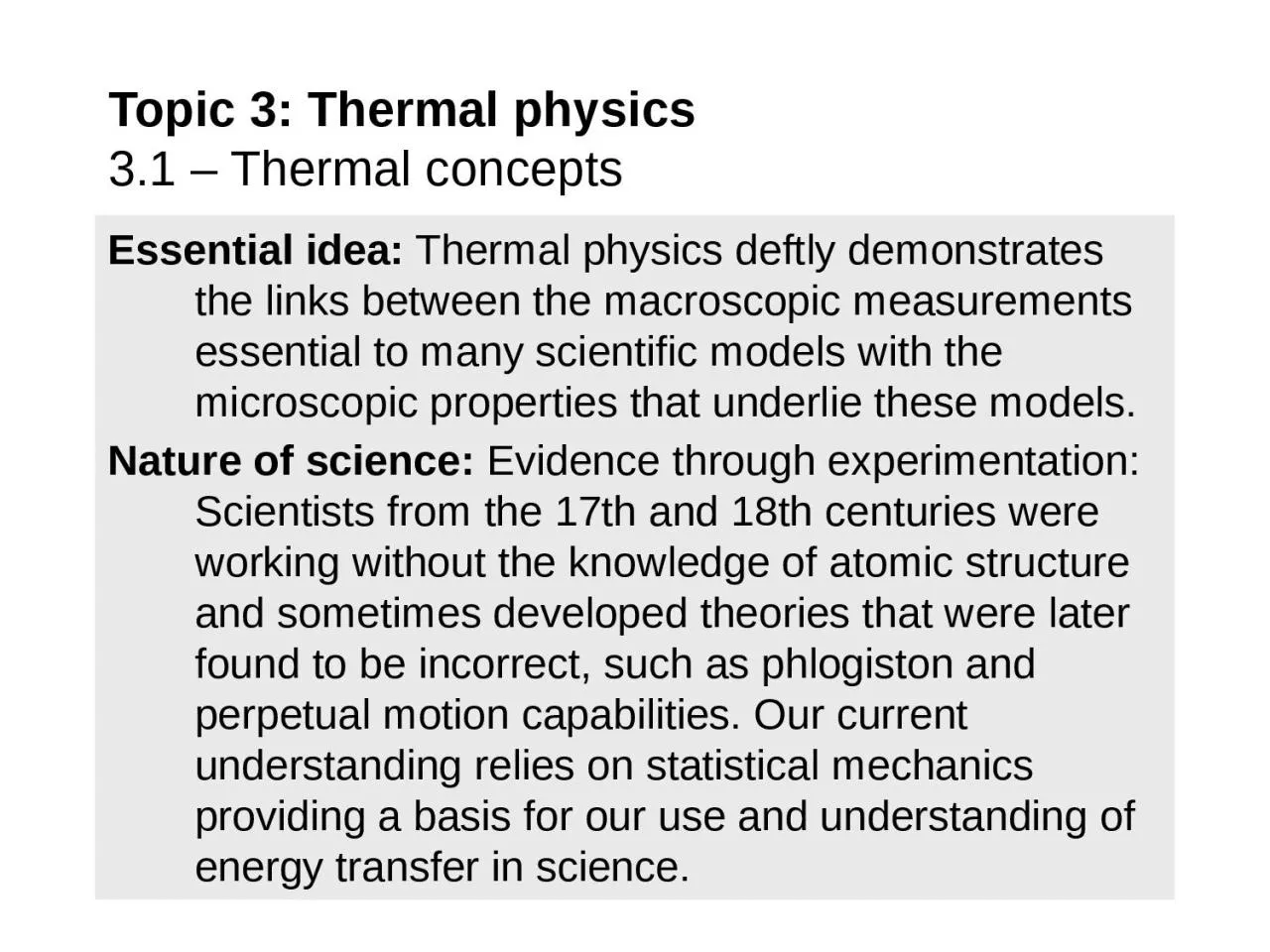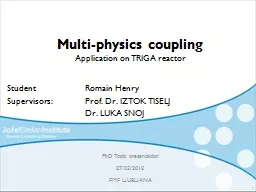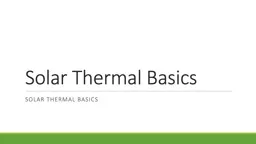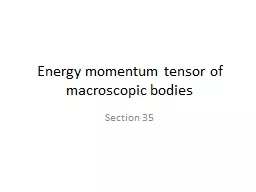PPT-Essential idea: Thermal physics deftly demonstrates the links between the macroscopic
Author : iris | Published Date : 2023-11-08
Nature of science Evidence through experimentation Scientists from the 17th and 18th centuries were working without the knowledge of atomic structure and sometimes
Presentation Embed Code
Download Presentation
Download Presentation The PPT/PDF document "Essential idea: Thermal physics deftly ..." is the property of its rightful owner. Permission is granted to download and print the materials on this website for personal, non-commercial use only, and to display it on your personal computer provided you do not modify the materials and that you retain all copyright notices contained in the materials. By downloading content from our website, you accept the terms of this agreement.
Essential idea: Thermal physics deftly demonstrates the links between the macroscopic: Transcript
Download Rules Of Document
"Essential idea: Thermal physics deftly demonstrates the links between the macroscopic"The content belongs to its owner. You may download and print it for personal use, without modification, and keep all copyright notices. By downloading, you agree to these terms.
Related Documents














